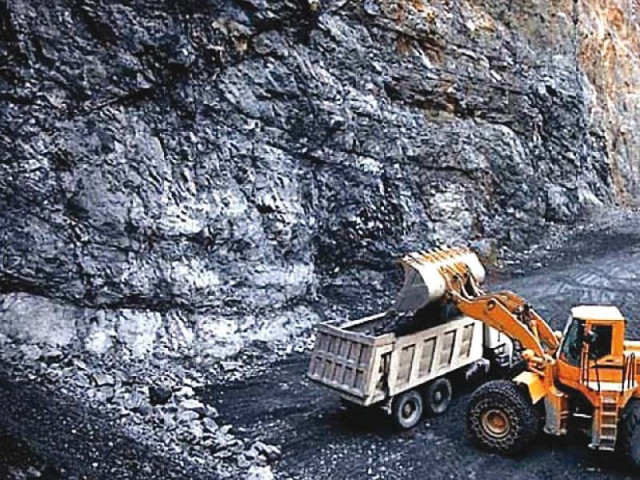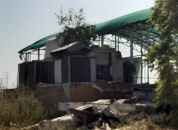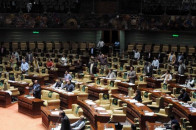With depleting gas reserves, Sindh looks to tap Thar coal for urea production
CM invites Chinese investment in a variety of projects, ranging from agriculture to power production

PHOTO: FILE
The Sindh government, under the China Pakistan Economic Corridor, has dedicated Block-IV for clean coal technology such as the conversion of coal to liquids (diesel) and coal to gas and then to fertiliser.
Between 2025 and 2027, Pakistan would need 2.6 million tonnes per year of urea and a quarter of Block-VI of Thar Coal has the potential to produce the volume for 30 years.
The CM made these remarks on Wednesday while addressing a 40-member delegation of the Chinese public and private investors, led by former Ambassador of China in Pakistan, Sha Zukang. The chief minister was assisted by provincial ministers, Saeed Ghani, Nasir Shah, Ikramullah Dharejo and Adviser to CM Murtaza Wahab. Planning and Development Chairperson Naheed Shah, as well as the finance, energy and local government secretaries, attended the meeting.
Pakistan rejects request to resume Samjhauta, Thar trains
Energy Secretary Musadiq Khan informed the meeting that the local gas reserves were depleting with each passing day and by the end of 2026, it would affect the production of urea. Energy secretary said that among all the alternatives for gas - the Re-Gasified Liquefied Natural Gas (RLNG), the Turkmenistan, Afghanistan, Pakistan & India (TAPI) pipeline and the Iran, Pakistan and India (IPI) pipeline - the new domestic discovery for the production of syngas from Thar coal was the cheapest source which could be produced at $3 per million British thermal units (MBTU).
The chief minister said that on the request of the Sindh government, the Joint Coordination Committee of CPEC projects had included Block-VI of the Thar Coal field for generation of 1,320MW power in phase-I and for the conversion coal to gas to urea in phase-II, which is moving towards clean coal technologies.
He further said that the Private Power Infrastructure Board (PPIB) of the Government of Pakistan had approved the issuance of Letter of Intent (LoI) for setting up a 1,320MW power plant on Thar Coal Block-VI to Beijing Jingneng Energy, a Chinese firm, but the latter had not obtained the LoI despite the passage of four to five months.
The chief minister urged the head of the Chinese delegation and the Chinese Consul-General in Karachi to help the Beijing Jingneng Energy obtain the LoI at Block-VI.
Meanwhile, the energy secretary informed the delegation about the 200MW waste-to-energy potential in Karachi city alone.
The chief minister said that the Sindh government has allowed all wind power projects to establish hybrid projects with solar plants on the same land [of their wind power projects] and this was another opportunity for Chinese investment.
Sindh govt asks Australia to invest in Thar coal
Secretary Musadiq said that the Sindh government has its own provincial grid company. Chinese investors can utilise the Sindh Transmission & Dispatch Company (STDC) as a vehicle for investment in the transmission sector in Sindh. He added that another opportunity was an investment in the automated metering infrastructure in the power distribution companies in Sindh.
The Chinese investors also offered to invest in a desalination plant and treatment plant in Karachi. They offered to establish factories for producing bathroom and kitchen materials and develop an energy park in the city.
The chief minister and the Chinese investors also agreed to work together in the agriculture sector right from grading and cold storage to value addition.
The chief minister directed all the relevant departments to prepare working papers and submit the same with the Chinese firms through their delegation head so that the projects to be taken up may be finalised.
Published in The Express Tribune, November 28th, 2019.



















COMMENTS
Comments are moderated and generally will be posted if they are on-topic and not abusive.
For more information, please see our Comments FAQ